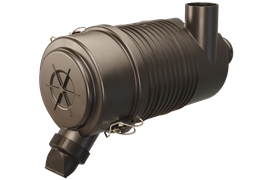Oil strikes again
11 August 2008
The Index’s June and July dive was the fourth multi-week losing streak it has suffered in just under a year. From a record high of 719.75 points exactly a year ago, it has shed 36.75% of its value in 12 months – equivalent to just over US$ 15 billion.
Mainstream indicators were also hit by the general sell off. The Dow fell a relatively moderate 2.92% over the same period, but losses were more severe for the FTSE 100 – down 5.5% – and, particularly, the Nikkei 225, which lost 7.60% of its value.
Despite the Nikkei’s falls, two of Japan’s major crane manufacturers, Hitachi and Kobe Steel, escaped relatively unscathed in July, with losses of just 4.20% and 6.98%. Although hardly good news, these were mild in comparison to the 20%-plus losses for Manitowoc, Palfinger and Terex.
The reason for all this carnage was (of course) inflation in general and the oil price in particular. July 11 saw the price of a barrel of black gold hit US$ 147 – an all time high in both nominal and inflation-adjusted terms.
According to the BP statistical review of world energy, oil is the world’s biggest source of primary energy, providing 35% of global energy needs in 2006. Oil products are, of course, the dominant energy source for transportation so, with such a fundamental role in our society and economic activity, it is easy to see why price rises have such a massive effect on stock markets. Oil is simply the lifeblood of the global economy.
Buying time
Despite all the doom and gloom, the fact remains that sharply falling markets provide opportunities for wily investors. By definition, if a market has bottomed-out it is the perfect time to buy, because the only way for it to go is up. The trick is to judge whether a particular stock has genuinely hit rock bottom, or whether it is simply pausing before plunging to even greater depths.
The result of this is that there is always a ‘bounce’ following a steep fall, and sooner or later one of these bounces becomes a recovery. The opportunities presented here are not to be underestimated. For example, the last trough in the IC Share Index was at the end of 2002 when it stood at just 79.42 points. Five and a half years later it peaked at 719.75 points for a near 900% capital gain.
The trick, of course, is timing!




